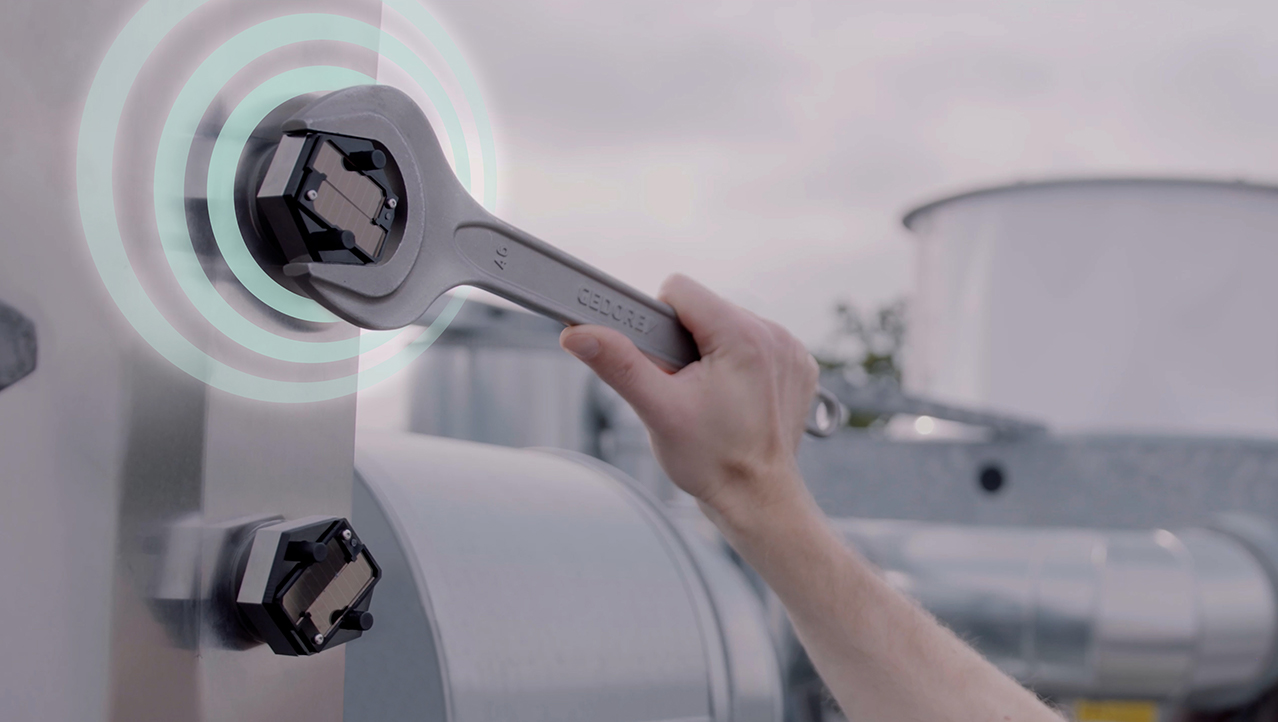Q-Bo makes condition monitoring of bolted joints and screws on wind turbines efficient, smart and sustainable
At WindEnergy 2022 in Hamburg, institutes of the Fraunhofer Cluster of Excellence for Cognitive Internet Technologies CCIT will demonstrate how sustainable energy can even be efficiently and sustainably monitored and maintained. With the Q-Bo® technology, Fraunhofer scientists show how bolted joints and screws, e.g. on the rotors or tower flanges of wind turbines, can be maintained without consuming large amounts of energy for installation, operation and transmission. This means that maintenance cycles for onshore and offshore wind turbines can be made many times more targeted and cost-efficient.
At WindEnergy Hamburg, the global show and event for the wind energy industry, the scientists are presenting a smart screw connection technology under the new brand name Q-Bo® that can make maintenance cycles for wind turbines more efficient and cost-effective in many places - both onshore and offshore.
With Q-Bo®, each screw is equipped with a new type of washer that uses a piezo resistive DiaForce thin sensor system to measure the preload force at three points. Any change in the preload force changes the electrical resistance in the DiaForce® thin film. When a screw comes loose, the resulting change in resistance is reported to a radio module located on the screw head. The radio module, in turn, sends the data to a base station, which collects the information from all relevant screws on the object. Using the mioty® radio protocol developed at Fraunhofer IIS, several hundred thousand screws can be connected to just one base station. The mioty® radio technology also makes robust and reliable data transmission possible through a special telegram splitting method. The base station could thus be located on the edge of a wind farm, for example, several hundred meters or even several kilometers away.
Sustainable in two senses
The researchers have also resolved the problem of energy demand in a resource-efficient manner. The system uses energy harvesting technologies. This involves the use of heat or light to generate electricity. For Q-Bo® a thermoelectric generator generates electricity from the minute differences in temperature between the screw head and the environment. It is also possible to generate the electricity through solar cells. Energy harvesting makes the system fully self-powered or extends battery runtimes," Dr. Peter Spies explains this sustainability aspect of the technology. "In addition, we ensure security and reliability of the data via a special commissioning box that assigns each Q-Bo® screw connection an individual ID as well as further info on the requirement profile and exact position, so that maintenance personnel can really rely on the data."
Q-Bo® technology can also be integrated into existing systems as a retrofit. At present, Q-Bo® is designed for commercially available DIN screws. The system is ready for use with screws of size M18, and systems for M20 and M36 will soon be available. Evaluation kits have already been shipped to the first companies, which are looking to optimize a wide range of applications there by using Q-Bo®.
"The joint Fraunhofer expertise from various disciplines enables to achieve the current demand for greater sustainability in maintenance of energy plants e.g. wind power. Thus, we ensure in a double sense a significant efficiency advantage in operation, which also helps to reduce costs," Dr. Peter Spies explains the development goal, which will now be presented in a product-ready prototype status from September 27-30 in Hall B5-227 at WindEnergy in Hamburg.
Further information as well as image and video material can be found here.
